Chapter 1, Part 19
One early morning at the reception in our hotel, situated amid the labyrinthine alleys of Kathmandu, we asked a lady, presumably the manager, about the cost of taking a taxi to Patan during the fuel crisis. We then walked to a taxi stand on Tridevi Sadak, just a few hundreds meters away, and asked the first driver we saw. It was still very early, the usual throngs of tourists and local people were yet to be seen, and the negotiation with the taxi driver went smoothly.
Located roughly 7 km south of the nation’s capital, Patan, also known as Lalitpur, is not only one of the largest cities in modern-day Nepal, but also one of the oldest with historical accounts dating back to the third century BC. At that time Ashoka was the king of a prominent Buddhist empire in the Indian subcontinent, controlling vast swathes of lands far beyond its core realm. Legend has it that the king once erected five stupas around an area which is today part of Patan. Taking the shape of Dharma Chakra – a ubiquitous wheel symbol in Buddhism – the stupas were said to guard all four directions of the town.
In spite of being a Hindu-majority country, Nepal has always been a land where Hinduism and Buddhism coexist, mostly peacefully. In the seventh century AD during the reign of King Amsuvarman of the Licchavi dynasty, temples of both religions were venerated and granted tax money.
In the beginning of the 13th century, the Mallas ruled over Kathmandu Valley and made Bhaktapur its capital. At that time Patan was considered a secondary town, and only when the two dynasties of Tipura and Bhonta took control of the valley between the mid-13th and 14th centuries did Patan serve as the capital of the region when Bhaktapur and Banepa, the capitals of both dynasties respectively, were constantly at war against each other. But in peacetime, they alternately provided kings for the valley.
In the 15th century, Yaksha Malla – one of the most successful kings in the history of the Malla dynasty – unified Nepal and enlarged the boundaries of his kingdom. However upon his death the kingdom was divided yet again, but this time between the king’s sons. The dynamics of the power struggle and political alliances in the valley were so intense that from 1516 to 1597 Patan was effectively independent of the Mallas and ruled by the noblemen of the town.
Patan returned to the hands of the Mallas following the conquest of the town by Siva Simha Malla from Kantipur (modern-day Kathmandu). However his kingdom was once again divided after his death in the early 17th century, with Siddhi Narasimha Malla controlling Patan, and Lakhsmi Narasimha Malla resorting to Kathmandu. Both were the grandsons of Siva Simha Malla.
The Patan we know today is essentially a creation of three kings: Siddhi Narasimha Malla, Srinivasa (Shree Niwas) Malla, and Yog Narendra Malla. Siddhi Narasimha built Krishna Mandir in the 17th century, a temple with a distinctive sikhara (towering spire above the sanctum) style unlike other multi-tiered roofed Newar temples more common in the valley. Facing the temple, a statue of Garuda – Vishnu’s vehicle – stood on a tall pedestal. Situated to the north was Vishwanath Temple, another shrine built by Siddhi Narasimha. Its walls were supported by wooden beams, a reminder of the destructive force that rattled the country several months before my visit. But instead of sadness and despair, the place was filled with the joy of students playing with the pigeons around the temples, as well as the colors of locals and tourists alike. Looming over them was Taleju Bhawani Temple, dedicated to the four-faced ten-handed clan goddess of the Mallas.
Constructed by Siddhi Narasimha and rebuilt by his son Srinivasa after being destroyed by fire, the Taleju Bhawani Temple with its multiple roofs dominated the city’s Durbar Square. Srinivasa also left a legacy at the northern end of the main passageway that cut through the heart of the square: Bhimsen Temple. According to the local tradition, Bhimsen is the god of business and trade, hence the temple’s importance for shopkeepers, artisans and farmers, among others.
Srinivasa Malla also established Mul Chowk in the 17th century, the main courtyard at the heart of the royal palace. Together with the adjacent and smaller Sundari Chowk, they housed some of the most exquisite works of Newar artists, including a golden doorway guarded by gilded statues of Ganga and Yamuna, the highly intricate Tushahiti stepwell (closed for renovation at the time of my visit), and countless ornately carved wooden window shutters and pillars.
All of the centuries-old architectural gems at Patan Durbar Square did leave a deep impression on a British traveler by the name of Percival London. In 1928 he wrote “As an ensemble, the Durbar in Patan probably remains the most picturesque collection of buildings that have been set up in so small a place by the piety of oriental man.” Yog Narendra Malla, Siddhi Narasimha’s grandson, unfortunately died at a relatively young age and left less grandiose monuments compared to what his father and grandfather had built. Poisoned at the age of 39, Yog Narendra Malla is believed to have been murdered by a person the people of Bhaktapur sent to Patan as revenge for a siege the young king had laid to the city.
One might be forgiven for not realizing that the Malla kings of Patan once ruled over a Buddhist-majority population for all of the temples around the Durbar Square were attributed to Hindu deities. Claiming themselves to be the descendants of Rama, the Hindu god from the Ramayana, the kings of Patan were in fact devout Hindus. However their rule was not perceived as a threat by the people as the Malla kings did not show any intention of converting them to Hinduism. They rather enveloped Buddhist rituals as a part of the bigger picture of Hindu cosmology.
Syncretism was indeed evident in Nepal, and it still is today. Located at Keshav Narayan Chowk, the 18th-century portion of Patan Royal Palace which was built in the final decades of the Mallas’ reign, Patan Museum provided me with a better understanding of how Hinduism evolved in Nepal. When the religion had not yet reached the Kathmandu Valley, the locals were animists, worshiping nature and the spirits. Hence in the earliest form of Hinduism, the Trimurti – Brahma, Vishnu and Shiva – were still unknown. Surya (the sun god), Chandra (the moon god), and Agni (the fire god) were worshiped instead, a result of the syncretism of Hinduism with animist beliefs.
It is apparent that thousands of years later, syncretism has become not only the norm, but also an integral part of Nepalese culture. And there is no other place in the valley where this is more evident than in eclectic Kathmandu.
Click here for the full list of stories from the Spice Odyssey series.

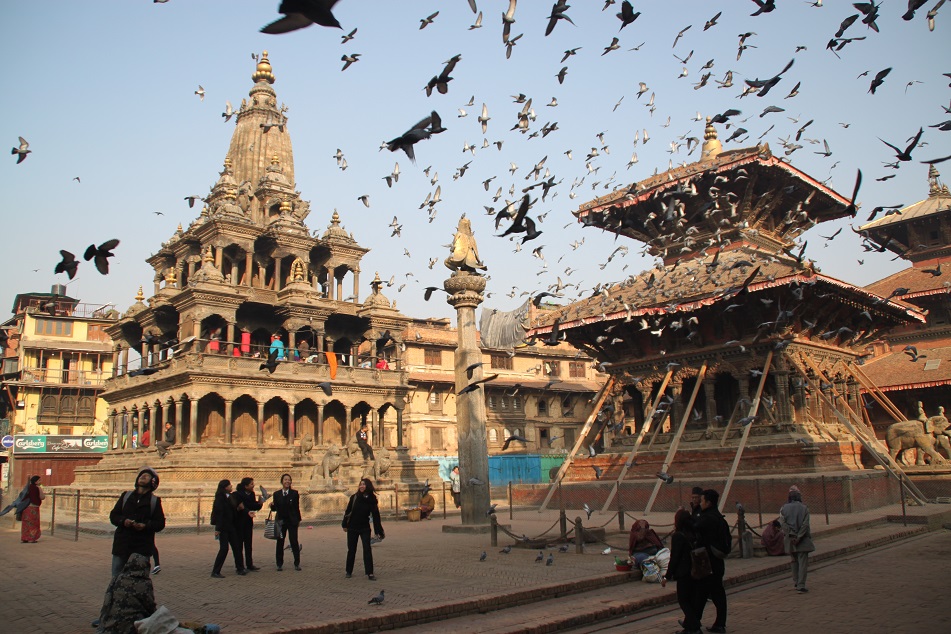
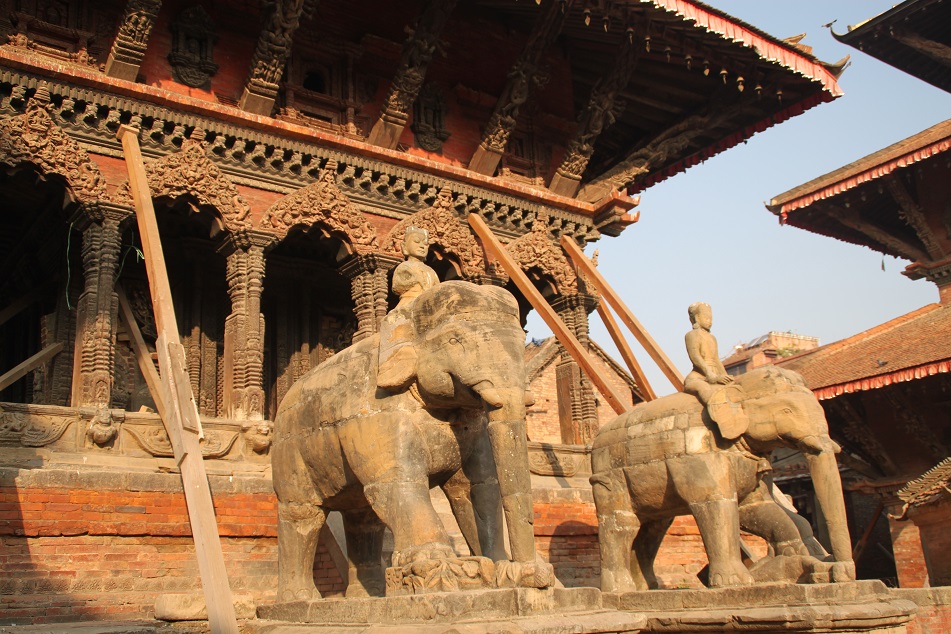
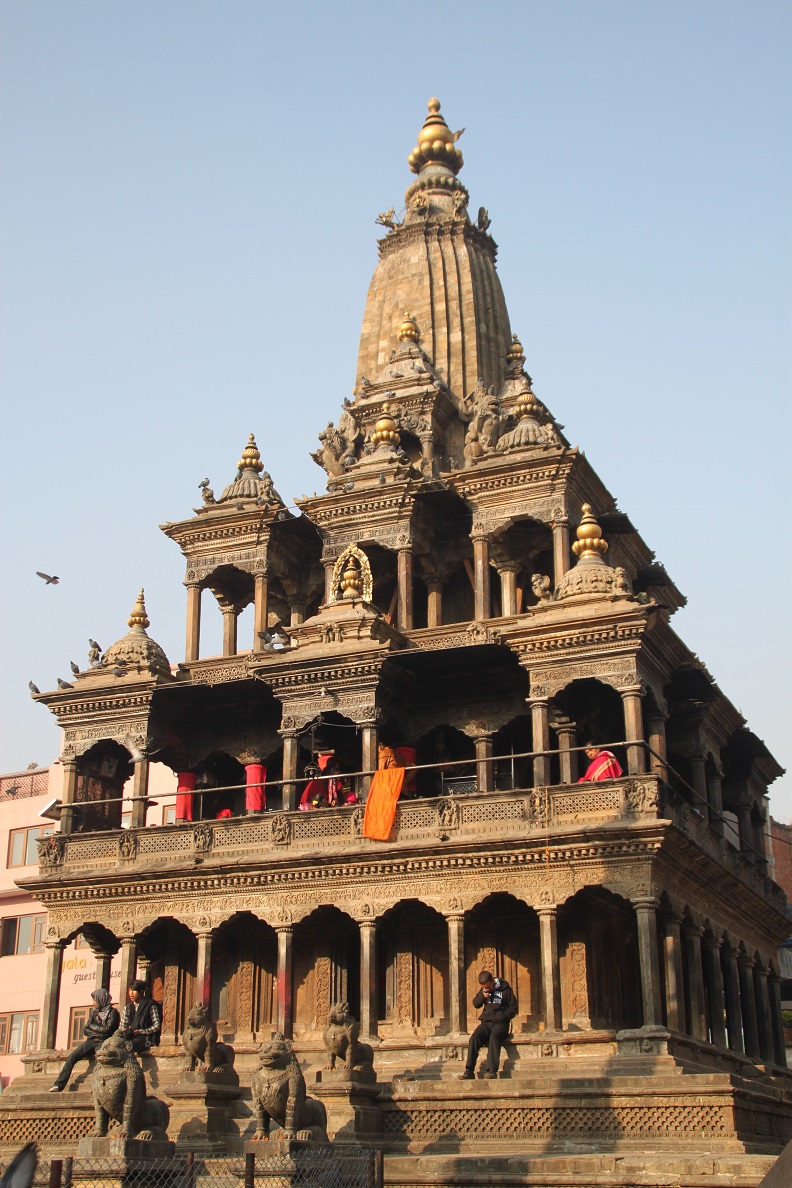
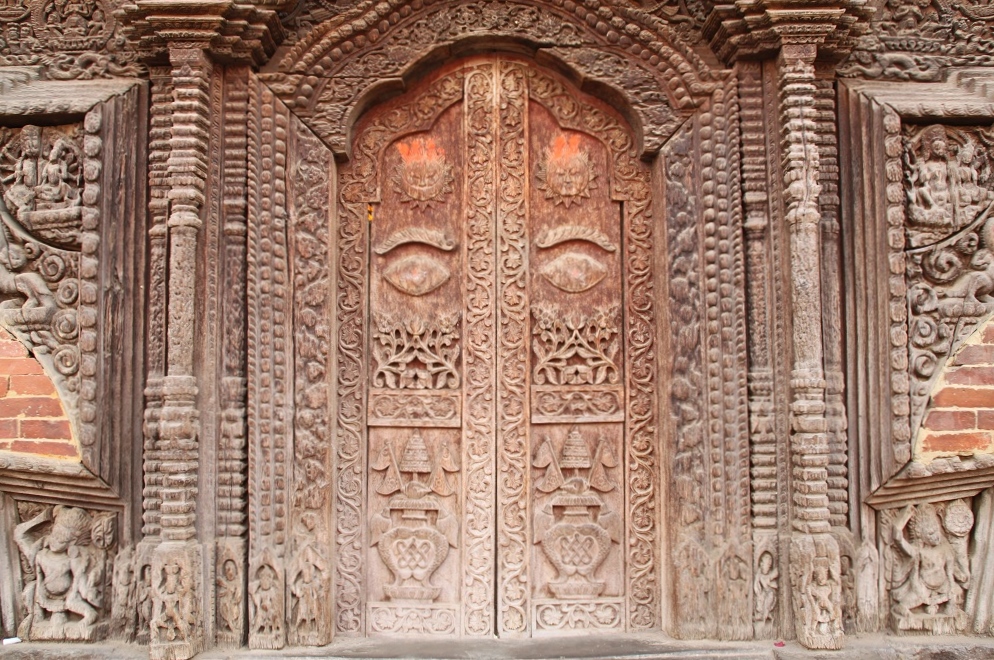


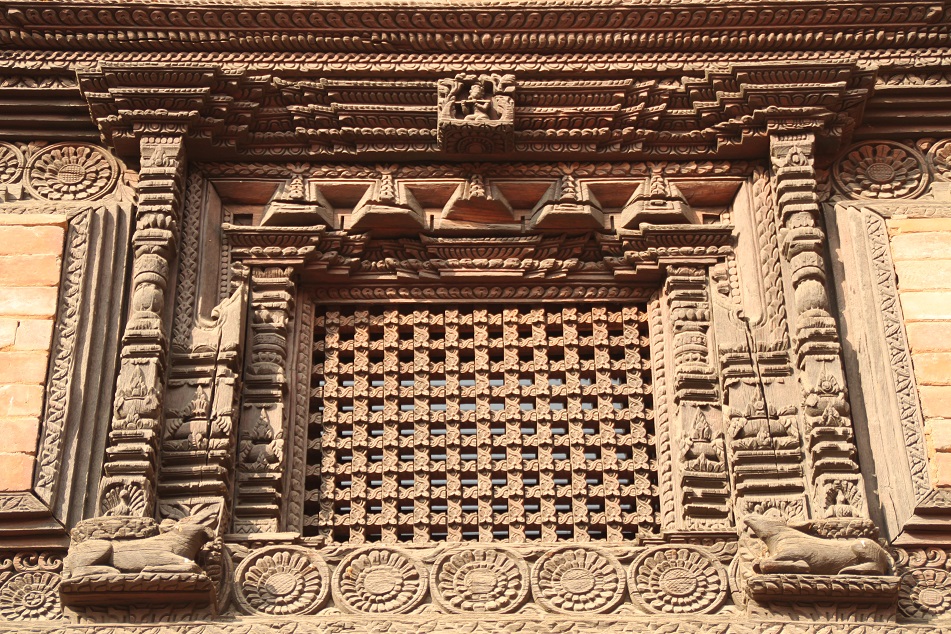
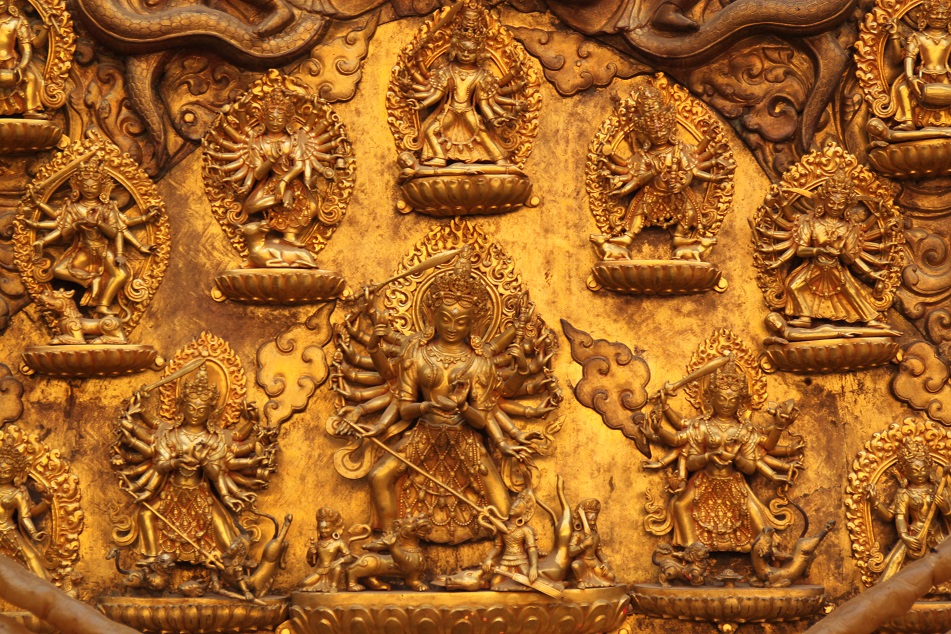

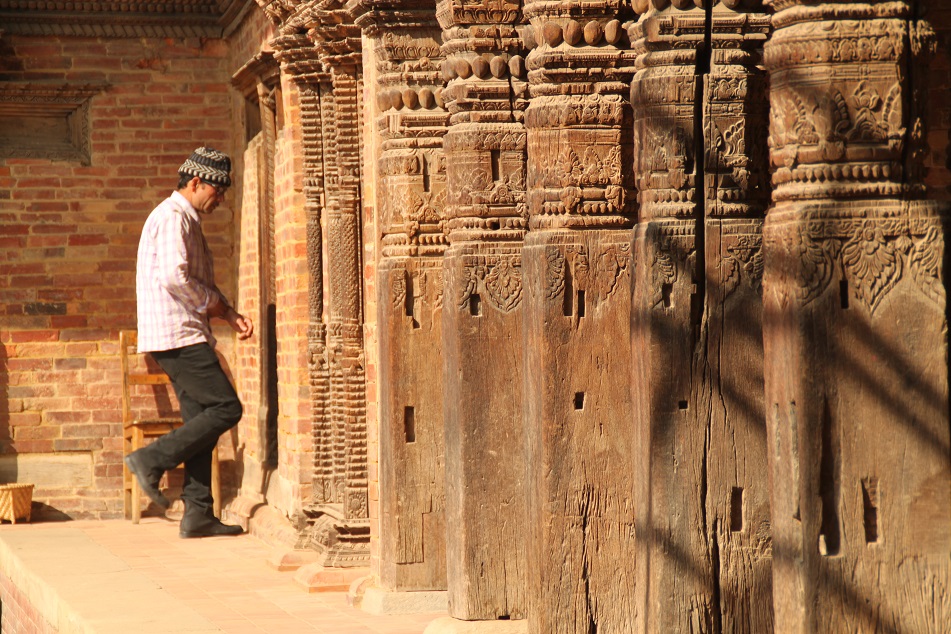
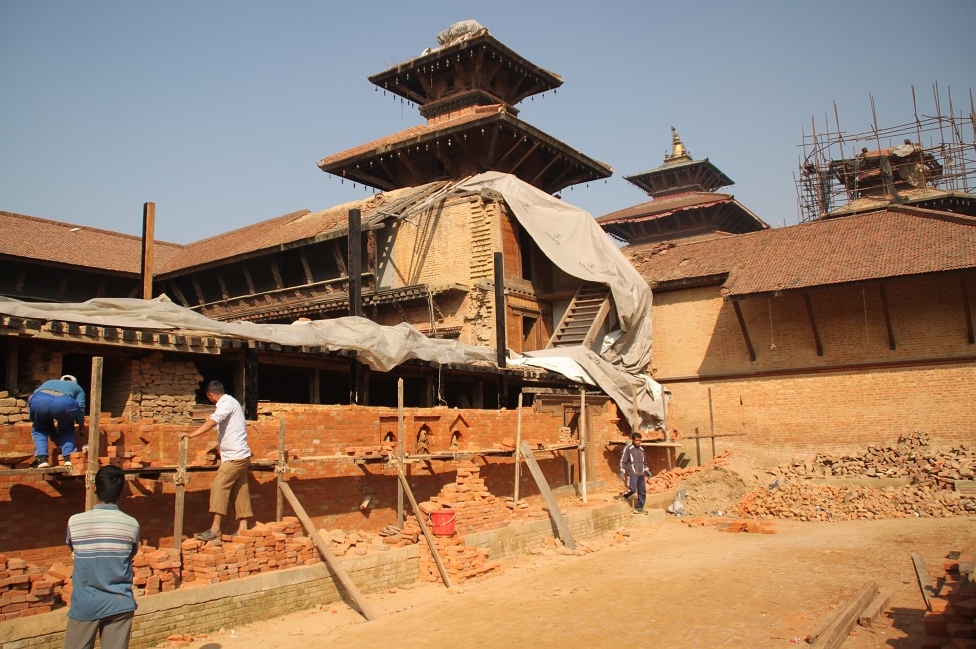
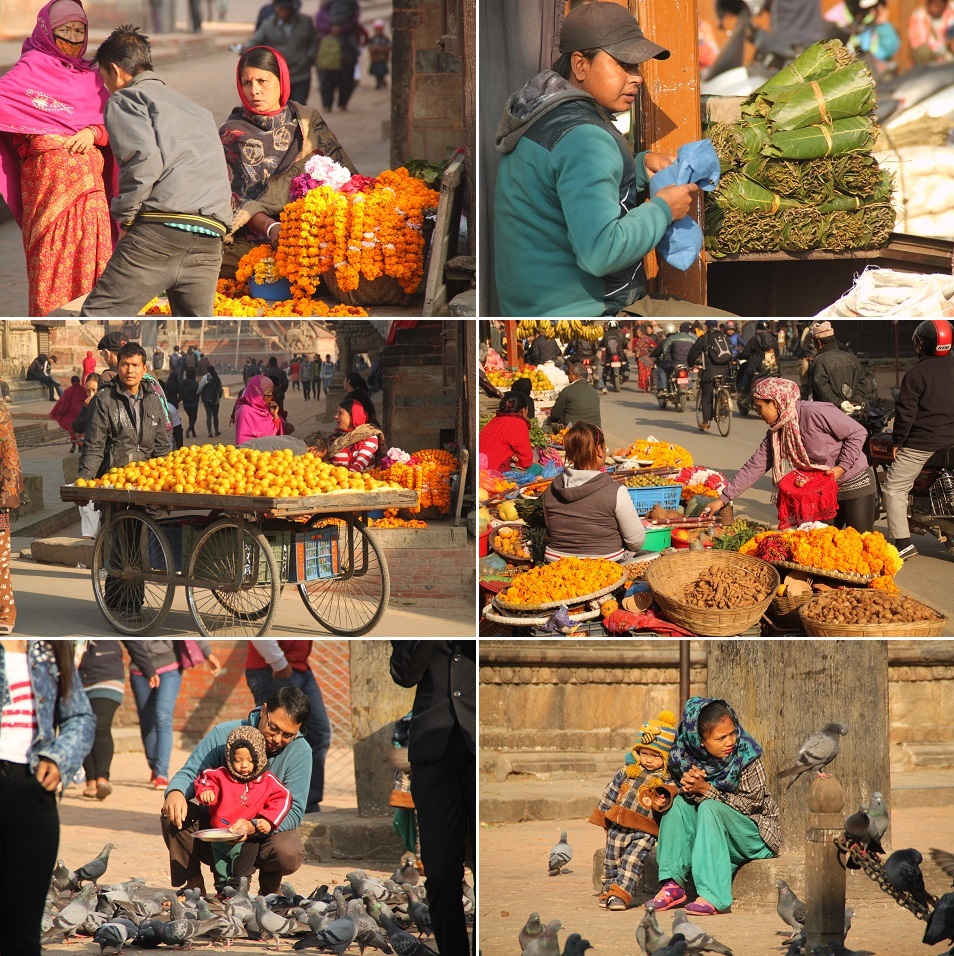
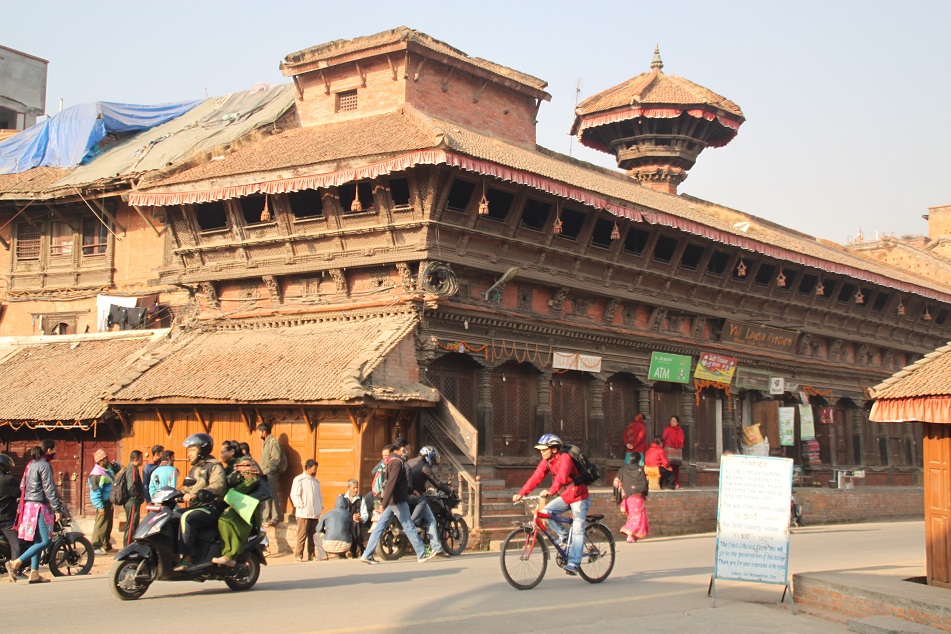
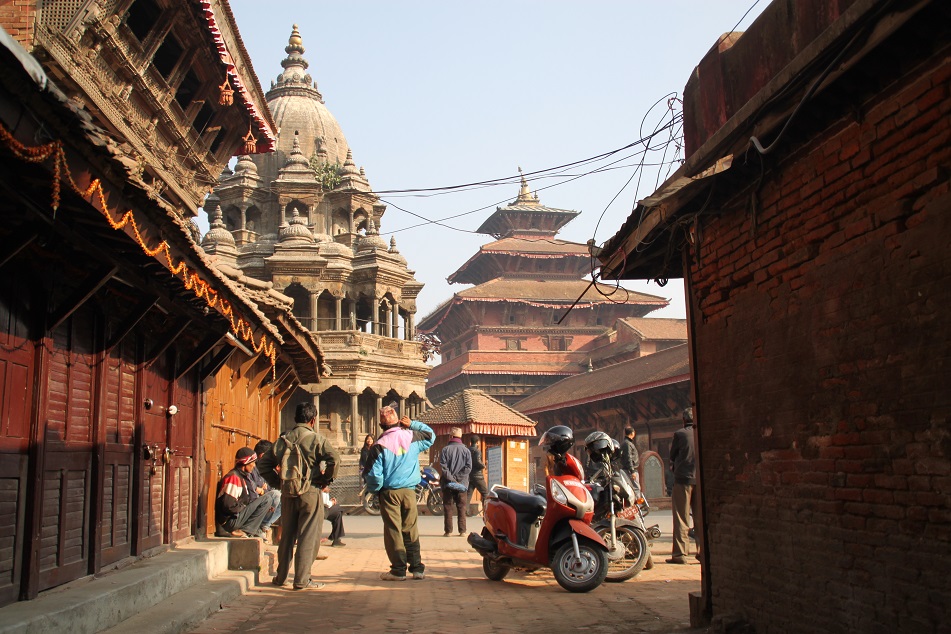
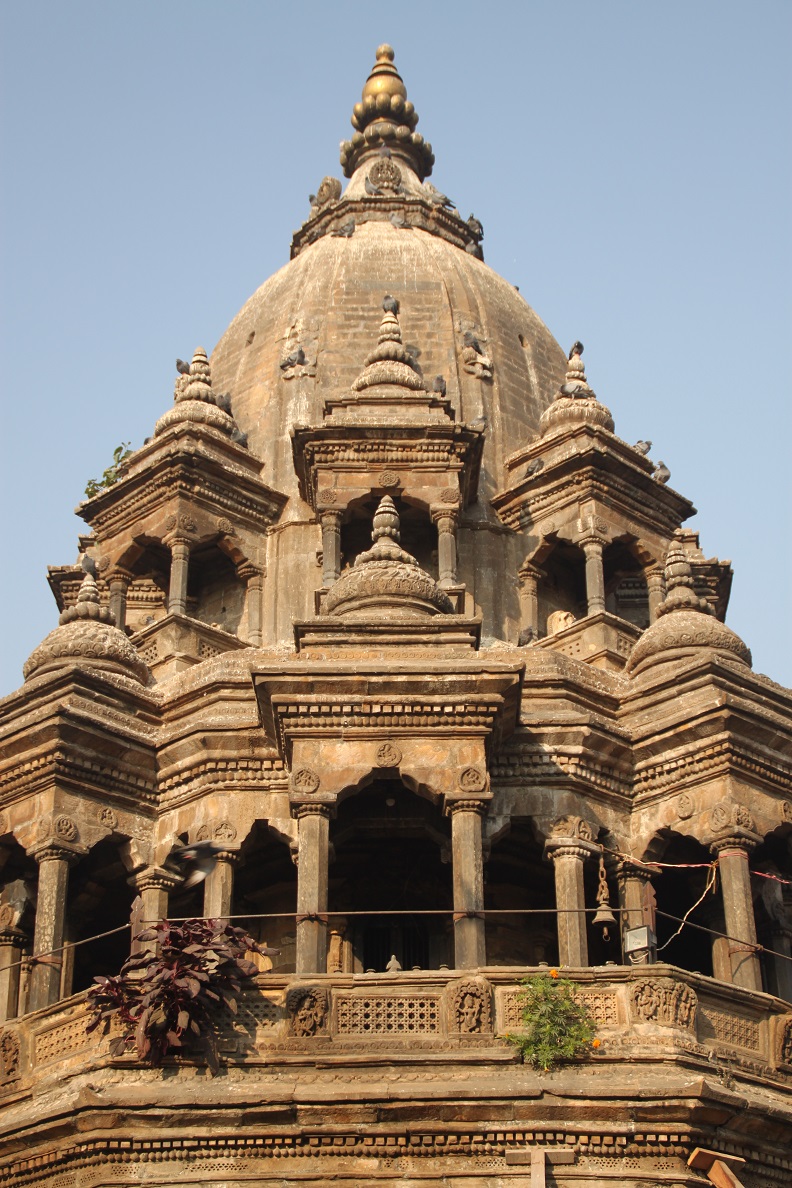
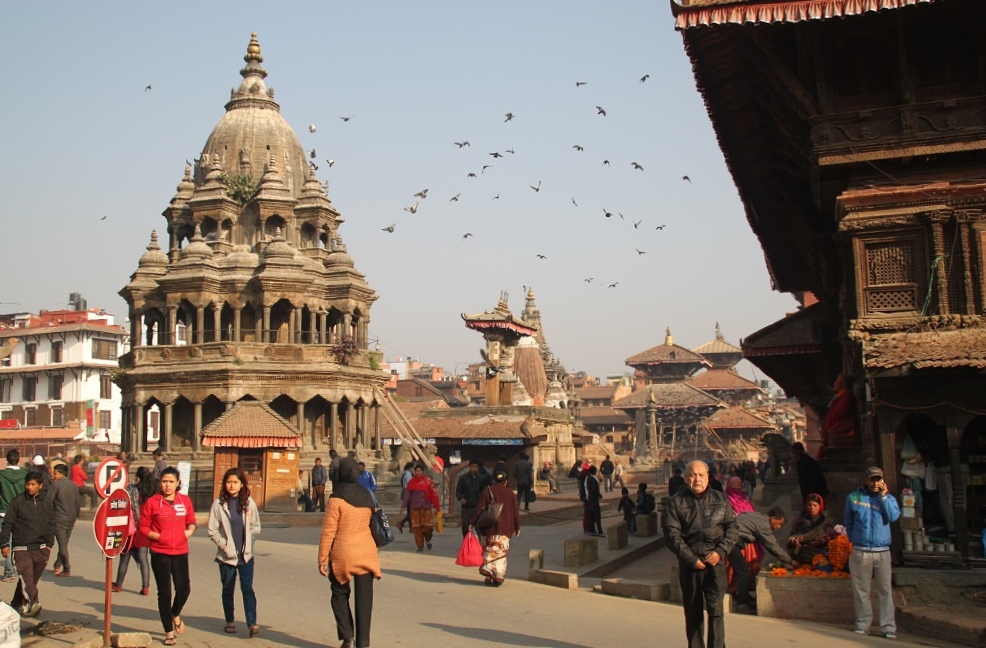
ya, I live here in the most beautifully blessed country 😄
LikeLiked by 1 person
Nepal really is one of the most fascinating countries I’ve ever visited. You have a beautiful home. 🙂
LikeLiked by 1 person
ohh yes…. It is beautiful home 🙂 Thank you 🙂
LikeLiked by 1 person
The modern people looked almost pasted into the old otherworldly photos of Patan.
LikeLike
I was relieved to see those marvelous ancient buildings still standing despite the devastating earthquakes months earlier. Thanks for reading!
LikeLike
Wow, amazing. Well written. Great photos.
LikeLiked by 1 person
Thanks for reading! I’m glad you enjoyed the history and the photos.
LikeLike
fascinating! I’m a travel blogger on here as well! 🙂 http://www.tifness.com
LikeLike
Hi Latifa. Thank you for dropping by!
LikeLike
Krishna Mandir has always dazzled us. It is entirely made of stones, has twenty one spires and has survived all the earthquakes that hit Kathmandu Valley since its construction.
Taleju is the Goddess of Mallas. It is believed that she is the same as Gadhimai in Bara brought in to the Valley. I’m not entirely sure of the legend though.
Before Yog Narendra Malla died, he ordered to construct his statue on a tall column. On his head was made a bird. He had said, “Until the bird flies away or does not touch the ground, I will not have died.” The statue fell on last year’s quake.
LikeLike
I was mesmerized by Krishna Mandir as well for its beautiful architecture and intricate carvings. It’s amazing that some ancient temples in the valley survived the earthquakes which had damaged so many structures over the course of centuries. Last year’s earthquakes were really devastating, but I have high hopes on the reconstruction efforts carried out by the locals. Thanks for the additional info!
LikeLiked by 1 person
You’re welcome! 🙂
LikeLike
Aduh aduh Bama… lagi-lagi bikin mules deh… kali ini Patan, terutama Krishna Mandir, my fav. Setiap abis paragraph jadi bilang aduh aduh hahaha.. kayak lagi disana dan terus terkagum2. Hihihi terima kasih ya sudah bikin mules karena saya jadi kangen Patan…..
LikeLike
Aduh mbak, mules yang ini saya gak tau obatnya apa. Mungkin beli tiket ke Kathmandu bisa jadi penawar mulesnya, hehe.. Gak nyesel memang nyempetin ke Patan. Indah dan eksotis banget kotanya.
LikeLiked by 1 person
A gorgeous post, Bama! And what an appropriate title for a place like Patan. Although two of the temples on Durbar Square collapsed in last year’s quake, and the royal palace suffered significant damage, it was encouraging to see how much of its landmarks survived. I was amazed that both Krishna Mandir and Krishna Temple survived completely unscathed – especially since both are built of stone and not more earthquake-resilient wood.
LikeLike
Makasih James! I was relieved to know that most of Patan’s ancient buildings survived the earthquakes. I told Bart to visit Tushahiti stepwell and when he was there it was already reopened for public! It was very encouraging to see the reconstruction work carried out by the locals at the royal palace. Maybe in a few years’ time Patan’s damaged temples will have been completely rebuilt. Hopefully.
LikeLiked by 1 person
Great Post. Spent some time in Nepal in 2014 and this brings back fond memories.
LikeLike
Hi John. Thanks for dropping by. Patan must have looked even more beautiful in 2014 before the earthquake. Despite the palpable signs of destruction when I was there, it was still an enchanting ancient city.
LikeLike
merpatinya cakep bange kak bama
LikeLike
Kata merpatinya makasih. 🙂
LikeLike
Well written! I learned a lot about Patan’s history reading your post, and you captured the city’s beauty in your shots. Great post! Looks like Patan and the rest of Nepal will be on my travelling bucket list now 😉
LikeLike
Thank you, Maria. I’m glad this post helped you understand a little bit of the history of this charming ancient city. If you love intricate carvings, exquisite architecture, and a dose of history then Patan (and other cities in the Kathmandu Valley) is a must for your to visit.
LikeLiked by 1 person
As always Bama an eloquent description of your travels. I knew nothing of Patan and now would see it as a destination not to be missed in Nepal. The photo of the birds in flight is stunning.
LikeLike
Thank you for such an uplifting comment, Sue. I guess when you’re in Nepal one day you can ride a bicycle around the Kathmandu Valley and explore all the ancient sites there. 🙂
LikeLiked by 1 person
Oh that sounds amazing Bama! Hopefully one day. 🙂
LikeLiked by 1 person
Excellent photos as always Bama. We didn’t make it to Patan when we visited Nepal, and from reading your post I realize that was unfortunate for us. It’s amazing that these intricately detailed buildings have survived in such a tectonically active area. ~James
LikeLike
Thanks James. When you come again to Nepal one day, make sure not to miss Patan. And when you’re in the city, pay a visit to the museum. It’s not a big museum, but it’s professionally run and quite well-curated. And of course you can marvel at those stupendous ancient temples at the Durbar Square.
LikeLike
Beautiful banget kak Bama 🙂 Nice post!
LikeLike
Hi Bayu. Thank you ya sudah baca postingan ini. Duh, saya lihat foto-foto underwater kamu jadi kangen pantai. 🙂
LikeLiked by 1 person
Need vitamin sea banget ya kak 😀
LikeLike
Banget! 😀
LikeLike
I, too, missed out on seeing Patan. I only had time for one outing from Kathmandu after my Khumbu trek, and I chose Bhaktapur. They look similar from your photos, but I’m sure each has its own unique character. Second best thing to going myself is reading your meaty post!
LikeLike
I spent more time in Bhaktapur than in Patan. Although both might seem similar on the surface (with those Newar temples and structures), I felt that Patan was more dense. Maybe it’s also because Bhaktapur was further away from the capital, so it felt more laid back, in a way. Thanks Lex! and I surely hope you will return to Nepal one day and visit Patan (despite having to deal with the chaotic baggage claim area at the airport). 🙂
LikeLiked by 1 person
Haha – nothing will keep me from returning to Nepal, Bama. It’s just a matter of when!
LikeLike
Same here. 😀
LikeLiked by 1 person
Selalu dan selalu, setiap kali aku mengunjungi bangunan kuno macam ini aku membayangkan kemegahan dan keriuhan aslinya di jaman bangunan ini dipakai sebagai kediaman Raja dan pusat pemerintahan Kerajaan Malla.
Menurutku museum Patan jauh lebih bagus dan tertata ya dibandingkan Durbar Square lainnya di lembah Kathmandu. Terlihat terawatt, terus ruangannya juga bersih. Ah jadi nyesel nih kemarin membatalkan nginep di Patan. Next ke Nepal lagi harus nginep di kota ini.
Btw, sempat masuk ke dalam Sundari Chowk gak Bam? Yang ada pemandian dengan pancuran emas berbentuk Dewa Wisnu dan istrinya berkendara Garuda?
LikeLike
Seru kali tuh Bart kalo bikin video kesibukan masa kini digabung sama kesibukan masa lalu yang diperankan aktor terus pake tone warna jadul gitu. Yes, aku terkesan banget sama museum di Patan. Jauh lebih bagus dibanding kebanyakan museum di Indonesia sih menurutku, dan kuratornya juga oke banget kayaknya.
Nah, pas aku ke sana Sundari Chowk lagi ditutup Bart. Lagi direnovasi. Makanya aku waktu itu kasih tau kamu siapa tau pas kamu di Patan udah dibuka lagi. Kalo liat foto-fotonya sih bikin ngiler.
LikeLiked by 1 person
Ide bagus Bam, tapi harus rekonstruksi adegan nya.
Ah iya setuju, kuratornya ok. Penataannya bagus, lilghtingnya bagus, penempatannya juga bagus. Dan petugasnya super ramah dan banyak yang cakep *keselek*
Alhamdulillah, aku berhasil masuk Sundari Chowk dan motret si pancuran emas itu. Tanpa pancuran itupun kolamnya udah keren. Dikelilingi pahatan-pahatan yang detail. Dan ada cerita lucu pas aku lagi di Sundari Chowk itu, tapi nanti aku bagi di blog aja yes 😉
LikeLike
Masa sih Bart? Kok seingetku banyakan ibu-ibu ya petugasnya? :p
Ahhh misterius nih Bart, hehe.. Ditunggu ya foto-foto sama ceritanya di blogmu.
LikeLike
Nah pas kemarin banyak anak mudanya, trus ada pameran fotografi juga untuk pengumpulan dana pembangunan kembali Nepal.
Hahaha gak semisterius dirimu kok Bam. Siaaap 🙂
LikeLike
Wah kayaknya seru! Hahaha, duh aku gak misterius kok. 😀
LikeLiked by 1 person
Bama, misterius? *langsung mengernyitkan dahi*
Belum kenal langsung aja kali … Hahahahaha … 😀
LikeLike
great post! i was sooo glad that at least some of those beautiful old buildings were still standing
after the earthquakes last year. Nepal would have to be one of my favouritest countries along with Indonesia : )) trims Trees
LikeLike
Thank you, Trees. I was so relieved as well to see most of the buildings in Bhaktapur and Patan still standing when I was there. I think you would enjoy Nepal as much as I did. It’s one of my favorite countries by far. Thanks for reading!
LikeLiked by 1 person
So many lovely photos and interesting narration. Thank you
LikeLike
Thank you for your kind words, Dr. Sridhar. I’m glad you enjoyed this post.
LikeLike
So many ‘people pictures’ !! I did enjoy these very much! My favourite ones are the vibrant market pictures. They remind me of Tanzania and it amazes me how the old and new can be so close to each other.
LikeLike
I did take more photos of people in Nepal. 😀 Those colorful flowers, fruits, and traditional dresses really made the Durbar Square in Patan a vibrant, ancient place. Thanks Katha!
LikeLike
beautiful old city. i like the ambience there 🙂
LikeLike
Hi Rhe. Just like other ancient cities in the Kathmandu Valley, Patan really is a beautiful and atmospheric place. Hopefully those damaged temples will be rebuilt sooner than later.
LikeLike
Pingback: The Fall of Constantinople | What an Amazing World!